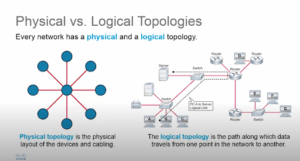
For businesses looking to enhance their network’s functionality and reliability, consider using dedicated server hosting to optimize network performance further. In contrast, the logical network diagram shows. They provide a cohesive framework for understanding and managing network resources effectively. A physical network diagram illustrates the interconnection of the devices in the network with wires and cables. In conclusion, logical networks are fundamental to today’s complex technology infrastructure. It offers a more comprehensive picture of how various network segments communicate, even if they are distributed across different physical locations. How are Network Diagrams used Network diagrams are used in computer telecommunication to draw a graphical chart of a network. This type of diagram maps out the network architecture, including cabling, hardware, and ports.

On the other hand, a logical network relates more to the conceptual and intangible aspects of the network, such as the arrangement of IP addresses and the way data is transferred across the network. Physical network diagrams illustrate the physical arrangement/layout of the devices in the network. This includes physical devices, their real connection, and the physical topology itself. A physical network primarily pertains to the physical layout of devices, cables, and hardware – essentially, the tangible aspects of the network. Physical part (topology) + Logical part (topology) Network topology The following image shows how physical topology and logical topology work in network topology. While both forms of networks serve critical functions in the technological ecosystem, they differ significantly.
PHYSICAL AND LOGICAL NETWORK DIAGRAM PRO
This Cisco logical computer network diagram example was created using the ConceptDraw PRO diagramming and vector drawing software extended with the Cisco Network Diagrams solution from the Computer and Networks area of ConceptDraw Solution Park.Difference between Physical and Logical Networks A physical network diagram shows the physical connections of. When diagramming your network, you’ll choose one of the twological or physicalto map your system. There are several types of topologies and hybrid versions, too. A topology consists of the physical and logical aspects of your network. while IBM's token ring is a logical ring topology, it is physically set up in star topology." Domain names and Internet protocol (IP) addresses give individual components their identification. When diagramming your network, you’ll choose one of the twological or physicalto map your system.

Logical topologies are bound to network protocols and describe how data is moved across the network.ĮXAMPLE : twisted pair Ethernet is a logical bus topology in a physical star topology layout. The logical topology defines how the systems communicate across the physical topologies. Try this logical network diagram template to optimize your networkjust customize the template to add your own subnets, routing protocols, and network devices. Using a physical network diagram helps optimize your floor plan to reduce cabling costs, provide maximum Wi-Fi connectivity, and. Logical network diagrams describe how information flows through a network, as opposed to physical network diagrams that show how networking devices connect with wires and cables. It represents the physical layout of the devices on the network. Computer network design has two elements: physical and logical.

Physical topology defines how the systems are physically connected. A logical network topology diagram shows the logical method of communication used by the devices inside the network for network communication.

How devices are connected to the network through the actual cables that transmit data, or the physical structure of the network, is called the physical topology. The physical network topology can be directly represented in a network diagram, as it is simply the physical graph represented by the diagrams, with network nodes as vertices and connections as undirected or direct edges (depending on the type of connection). "Logical topology, or signal topology, is the arrangement of devices on a computer network and how they communicate with one another.


 0 kommentar(er)
0 kommentar(er)
